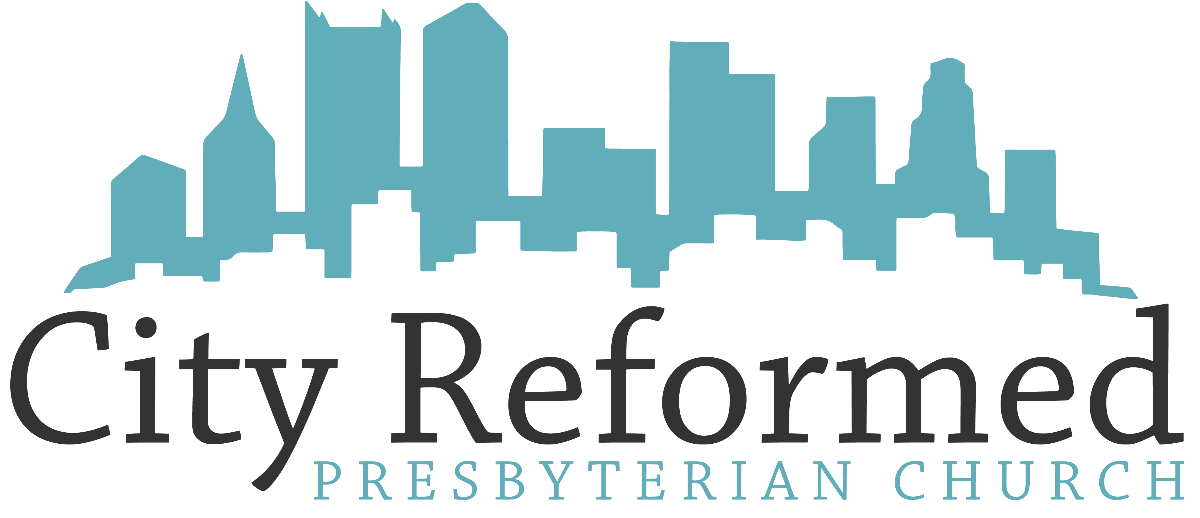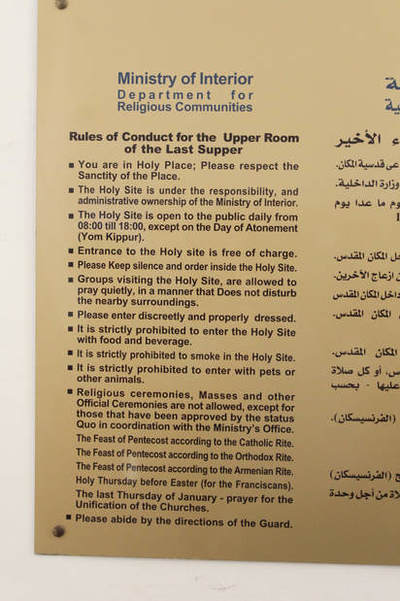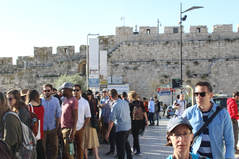One of the most surprising aspects of this trip is the incredible diversity of life here in Jerusalem. That is happening on so many levels.
First, there is an remarkable diversity of Christian pilgrims in the city. Tour buses full of African Christians and Europeans from the former soviet block countries jockey for position in the park lots of the ancient churches. Tonight, as I write in the lobby of our hotel I watched a group of Italian priests receive an introduction to the hotel. After their departure the room fills with Korean women in the 50’s and 60’s.
This morning I was asked to give a short devotional during our bus ride and I read from Isaiah 2:2-3. City Reformed people will know that we did a 6 week blog series based around those verses last year. Today I saw the most vivid depiction of God’s people as we toured the Holy sites of the city.
It shall come to pass in the latter days that the mountain of the house of the LORD shall be established as the highest of the mountains, and shall be lifted up above the hills; and all the nations shall flow to it,
and many peoples shall come, and say: “Come, let us go up to the mountain of the LORD, to the house of the God of Jacob, that he may teach us his ways and that we may walk in his paths.” (Isa. 2:2-3)
Today I saw people from every continent flowing to the mountain of the house of the Lord. Literally.
But diversity among Christians is only part of the story. Jerusalem is a 5000 year old city and it contains layer upon layer of religious expression. It is a very important religious city for the worlds three largest monotheistic religions. Jews, Christians and Muslims consider it to be a place of great importance. And that is not an easy arrangement. The Old City of Jerusalem is divided into sections of Jews, Muslims and Christians – all of whom trace their lineage back for hundreds of years in the city. Currently, the city is under Jewish control, but that has only been the case since the 6 days war in 1967. In the tentative balance of Middle Easter politics, the local people navigate the delicate relationships which characterize their daily life. At the Western Wall, the Muslim call to prayer, the Christian church bells and the groaning prayers of the Jewish people rise together into the air above this contested city.
One particular story demonstrates the tense nature of this balance. We closed our day today with a visit to an old site that commemorates the last supper. It is highly doubtful that this marks the actual site of the last supper, but the building has been venerated for that purpose since at least the time of the crusaders and maybe before. Almost unbelievably, it is located on top of what the Jewish people recognize as the tomb of King David. The small building which contains the purported sarcophagus of David is filled with praying rabbis and is considered to be the second holiest Jewish site in the city. During the time of Turkish rule, the hostilities surrounding the use of this location created enough tension that the local Muslim ruler attempted to solve the problem by turning the building into a Mosque. That only made it worse. After the city returned to Jewish control in 1967, you can imagine the challenge of balancing these three different expectations. This one location is considered a significantly important holy site by three religions – with a long history of conflict. As we entered our tour guide warned us: “The rules are very strict here. You cannot pray out loud, you cannot sing. You must be careful. We do not want to start a fight.”
This sign was on the wall:


